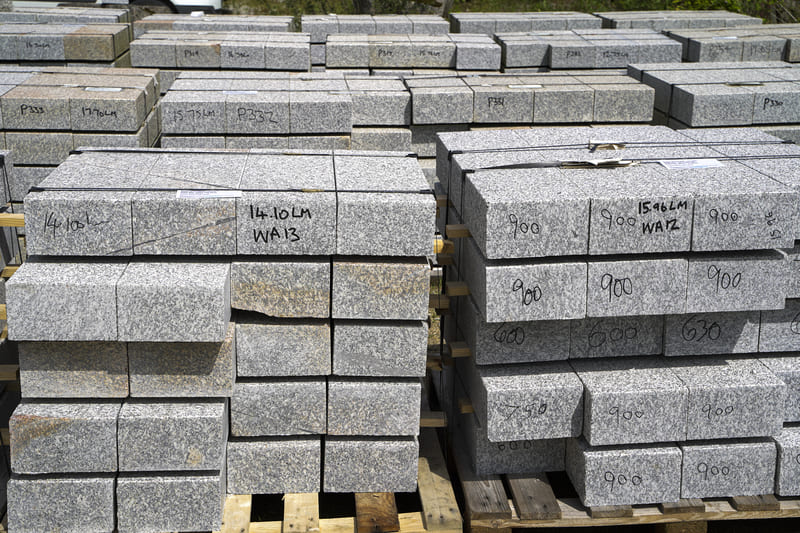Low-carbon Construction
In line with the Duchy of Cornwall’s Zero Carbon Strategy, Nansledan is embracing new technologies and carbon-efficient methods of design and construction, while trialling new materials and sharing best practice to reduce the impact on the environment.
Reducing embodied carbon
From the outset of the development in 2014, the Duchy of Cornwall and its housebuilder partners have taken a ‘fabric first’ approach to design, using a high performance thermal ‘envelope’ around a traditional architectural building.
Materials are carefully selected from a sustainable materials schedule, focusing on local sourcing (e.g. a focus on UK slate, Cornish granite and blockwork from 93% recycled aggregate) and less energy intensive production processes, where possible.
Upcoming phases and commercial spaces across Nansledan are now being designed independently of any gas infrastructure and include ground-source and air-source heat pumps and roof-mounted solar PV.
Using this holistic and sustainable approach to construction, residential and commercial buildings are now being designed and delivered to London Energy Transformation Initiative (LETI) and Royal Institute of British Architects (RIBA) 2030 Climate Challenge sustainability targets and further steps are being taken to select innovative, low-carbon and natural materials, in the ongoing drive towards Net Zero.
Pilot projects are also ongoing for timber-framed homes and domestic house batteries, as well as even thermally improved timber windows.
Across Nansledan, garages include ducting for electric vehicle charging points, and a series of communal charging points are planned for fast charging electric vehicles in commercial squares.
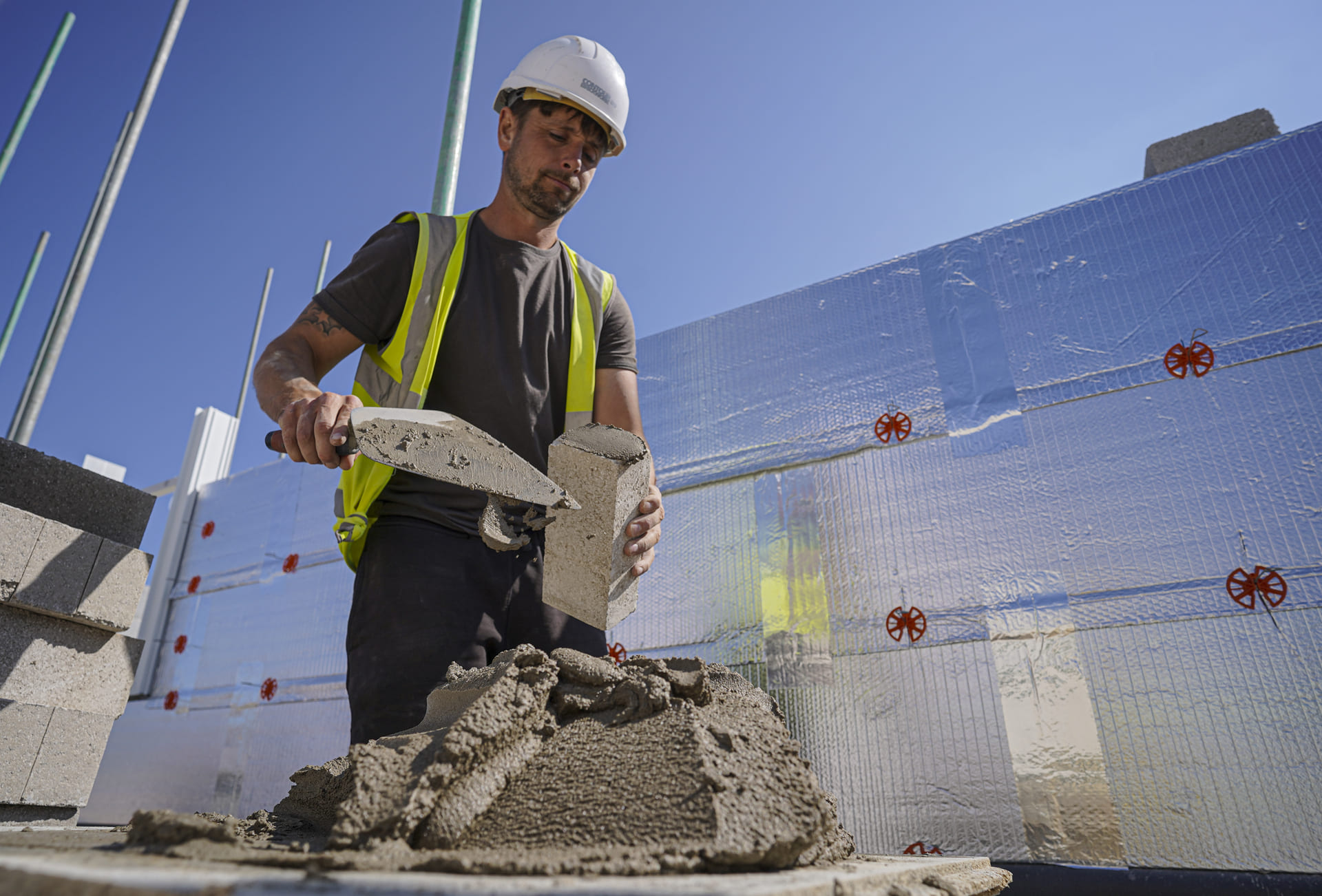
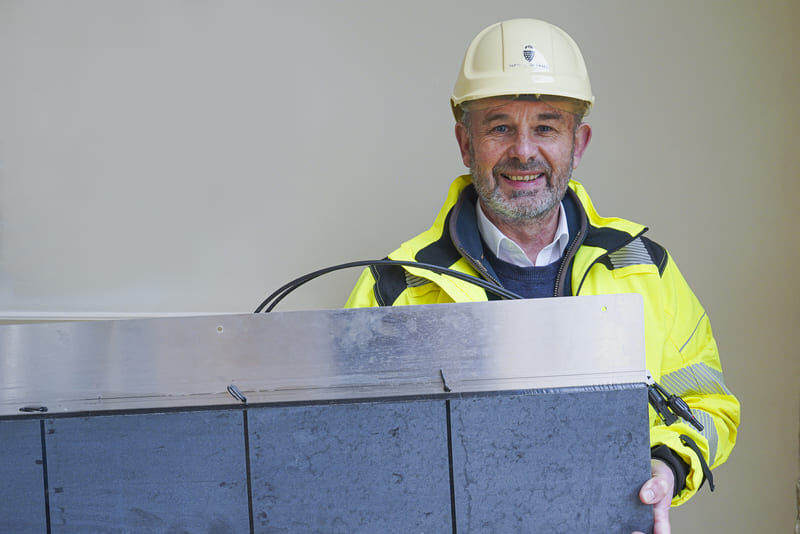
Solar Slates
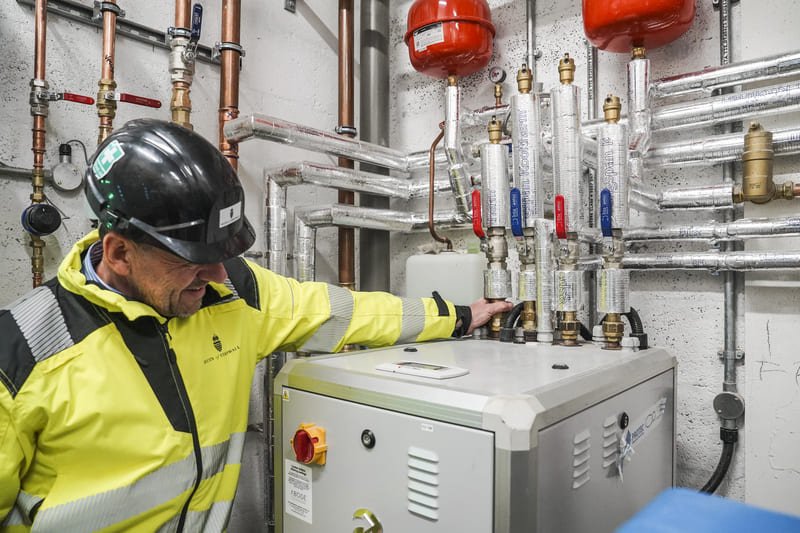
Ground-source Heat Pumps
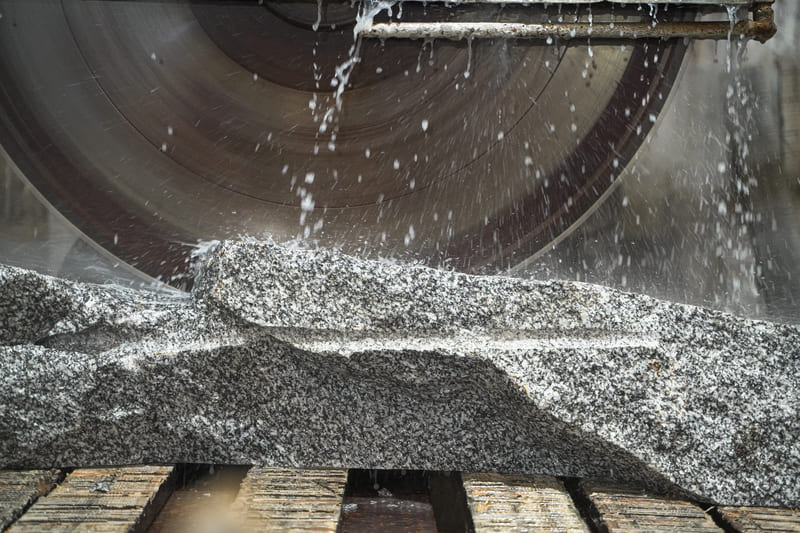
Local Granite
Embodied carbon targets
Nansledan’s buildings are independently assessed for their embodied carbon (which is a whole life carbon approach, including construction materials, as opposed to just looking at the sources of energy) and this graph illustrates where the average Nansledan home sits on the steps towards true Net Zero. Upcoming phases at Nansledan are now reaching LETI 2030 targets, with the use of ground-source and air-source heat pumps, material choices and other innovative technologies
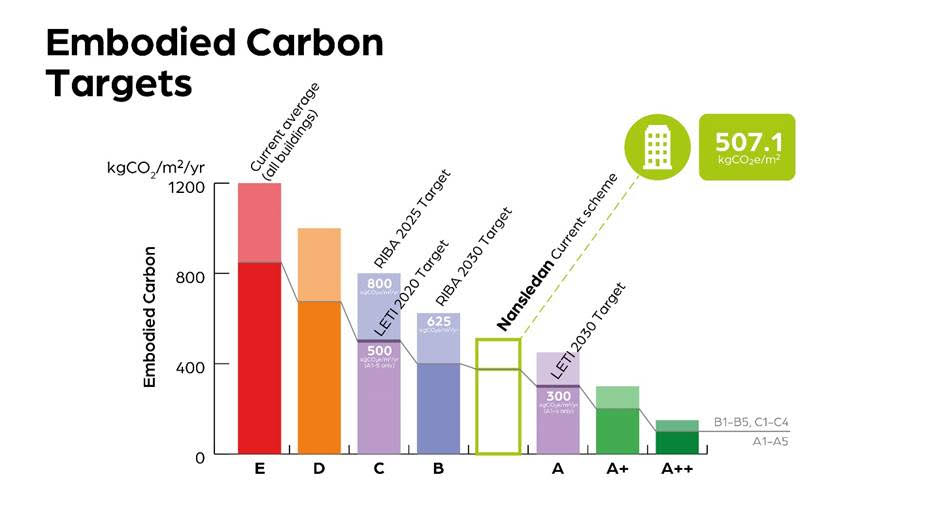
Design and materials
Nansledan uses locally-sourced building materials like Cornish slate, stone and granite. This has helped reduce the amount of embedded carbon in new homes to levels that already exceed 2030 RIBA Climate Challenge targets.
Sourcing locally also supports the Cornish economy, keeps traditional trades alive and reflects local identity.
The Duchy of Cornwall’s Building Code for Nansledan governs which materials can be used. It also sets out the sequence of choice to make sure that where possible materials come first from Cornwall and if not then the south west of England, UK or Europe – in that order.
Nansledan makes use of a range of natural materials, locally sourced where possible. Roofing slate comes from Trevillett Slate near Tintagel on the North Cornwall coast, and from Penrhyn Quarry in Wales and Burlington Stone in Cumbria. Granite for kerb stones and cobbles is from De Lank Quarry on Bodmin Moor, rustic stone for housing and Cornish hedges is from Callywith Quarry at Bodmin, and cut slate for street signage and sills comes from Delabole Slate Quarry, also in North Cornwall. All windows are wooden or metal, not uPVC.
